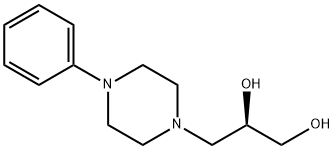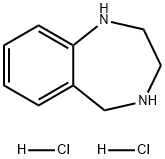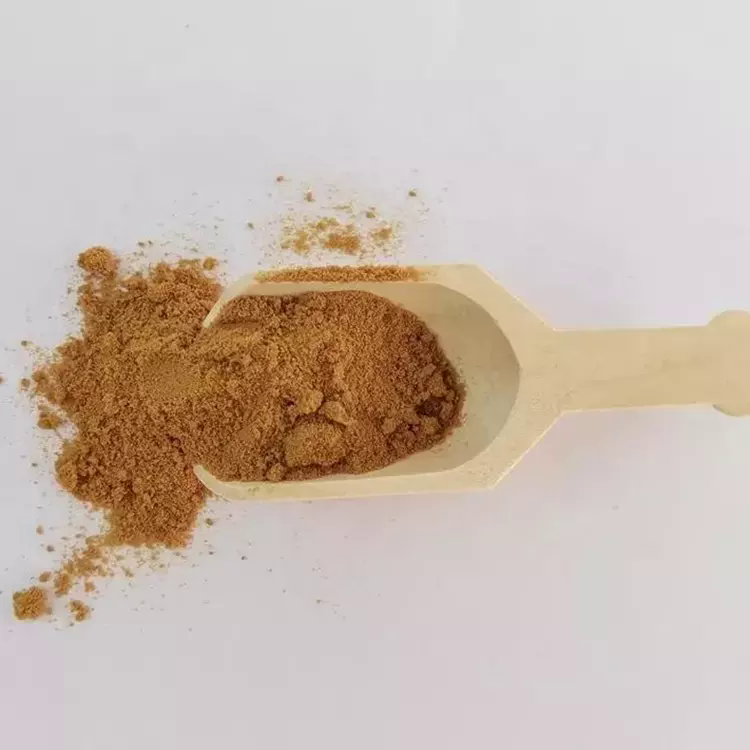1-(4-Fluorophenyl)piperazine dihydrochloride
- CAS NO.:64090-19-3
- Empirical Formula: C10H15Cl2FN2
- Molecular Weight: 253.14
- MDL number: MFCD00012765
- EINECS: 633-199-3
- SAFETY DATA SHEET (SDS)
- Update Date: 2023-04-25 08:58:58

What is 1-(4-Fluorophenyl)piperazine dihydrochloride?
Chemical properties
White solid
The Uses of 1-(4-Fluorophenyl)piperazine dihydrochloride
Phenylpiperazines are entactogenic drugs which direct central serotonin release. Substituted phenylpiperazines, such as 1-(3-chlorophenyl)piperazine, have been identified as designer drugs or drugs of abuse. 1-(4-Fluorophenyl)piperazine dihydrochloride is a substituted phenylpiperazine with a potential for abuse. The physiological and toxicological properties of this compound have not been evaluated. This product is intended for forensic and research applications.
The Uses of 1-(4-Fluorophenyl)piperazine dihydrochloride
1-(4-Fluorophenyl)piperazine is a major metabolite of Niaparazine, a sedative, hypnotic drug. Metabolites of Niaprazine occurred by N-dealkylation, N-dearylation, aromatic hydroxylation and N-oxidation.
Properties of 1-(4-Fluorophenyl)piperazine dihydrochloride
| Melting point: | 231-234 °C(lit.) |
| storage temp. | Store below +30°C. |
| solubility | DMSO: 10 mg/ml; PBS (pH 7.2): 10 mg/ml |
| form | powder to crystal |
| color | White to Light yellow to Light orange |
| BRN | 4826840 |
| InChI | InChI=1S/C10H13FN2.2ClH/c11-9-1-3-10(4-2-9)13-7-5-12-6-8-13;;/h1-4,12H,5-8H2;2*1H |
| CAS DataBase Reference | 64090-19-3(CAS DataBase Reference) |
Safety information for 1-(4-Fluorophenyl)piperazine dihydrochloride
| Signal word | Warning |
| Pictogram(s) |
 Skull and Crossbones Acute Toxicity GHS06  Exclamation Mark Irritant GHS07 |
| GHS Hazard Statements |
H301:Acute toxicity,oral H315:Skin corrosion/irritation H319:Serious eye damage/eye irritation H335:Specific target organ toxicity, single exposure;Respiratory tract irritation |
| Precautionary Statement Codes |
P261:Avoid breathing dust/fume/gas/mist/vapours/spray. P264:Wash hands thoroughly after handling. P264:Wash skin thouroughly after handling. P270:Do not eat, drink or smoke when using this product. P271:Use only outdoors or in a well-ventilated area. P280:Wear protective gloves/protective clothing/eye protection/face protection. P305+P351+P338:IF IN EYES: Rinse cautiously with water for several minutes. Remove contact lenses, if present and easy to do. Continuerinsing. P405:Store locked up. P501:Dispose of contents/container to..… |
Computed Descriptors for 1-(4-Fluorophenyl)piperazine dihydrochloride
| InChIKey | DZQVAQAZQDURKX-UHFFFAOYSA-N |
| SMILES | N1(C2=CC=C(F)C=C2)CCNCC1.[H]Cl.[H]Cl |
1-(4-Fluorophenyl)piperazine dihydrochloride manufacturer
Pratap Organics Pvt Ltd
1Y
Phone:+91-9920018682
Whatsapp: +91 9920018682
product: 64090-19-3 1-(4-Fluorophenyl)-piperazine dihydrochloride 99%
New Products
Tert-butyl bis(2-chloroethyl)carbamate (S)-3-Aminobutanenitrile hydrochloride N-Boc-D-alaninol N-BOC-D/L-ALANINOL N-octanoyl benzotriazole 4-Hydrazinobenzoic acid 3,4-Dibenzyloxybenzaldehyde 1,1’-CARBONYLDIIMIDAZOLE R-2-BENZYLOXY PROPIONIC ACID 1,1’-CARBONYLDI (1,2-4 TRIAZOLE) 4-HYDROXY BENZYL ALCOHOL 3-NITRO-2-METHYL ANILINE (2-Hydroxyphenyl)acetonitrile 4-Bromopyrazole 5-BROMO-2CYANO PYRIDINE 5,6-Dimethoxyindanone 5-broMo-2-chloro-N-cyclopentylpyriMidin-4-aMine 4-methoxy-3,5-dinitropyridine 2-(Cyanocyclohexyl)acetic acid 2-aminopropyl benzoate hydrochloride 1-(4-(aminomethyl)benzyl)urea hydrochloride tert-butyl 4- (ureidomethyl)benzylcarbamate diethyl 2-(2-((tertbutoxycarbonyl)amino) ethyl)malonate Ethyl-2-chloro((4-methoxyphenyl)hydrazono)acetateRelated products of tetrahydrofuran








You may like
-
 64090-19-3 1-(4-Fluorophenyl)-piperazine dihydrochloride 99%View Details
64090-19-3 1-(4-Fluorophenyl)-piperazine dihydrochloride 99%View Details
64090-19-3 -
 1-(4-Fluorophenyl)piperazine Dihydrochloride CAS 64090-19-3View Details
1-(4-Fluorophenyl)piperazine Dihydrochloride CAS 64090-19-3View Details
64090-19-3 -
 55441-95-7 99%View Details
55441-95-7 99%View Details
55441-95-7 -
 N-Vinylformamide 99%View Details
N-Vinylformamide 99%View Details
13162-05-5 -
 Chloro Uracil 1820-81-1 99%View Details
Chloro Uracil 1820-81-1 99%View Details
1820-81-1 -
 2-ethyl-6-methyl-3-hydroxypyridine succinate 99%View Details
2-ethyl-6-methyl-3-hydroxypyridine succinate 99%View Details
127464-43-1 -
 2-ETHYLPYRIDINE 100-71-0 99%View Details
2-ETHYLPYRIDINE 100-71-0 99%View Details
100-71-0 -
 181228-33-1 (S)-Methyl 3-amino-2-((tert-butoxycarbonyl)amino)propanote Hydrochloride (DAP-OMe. HCl) 99%View Details
181228-33-1 (S)-Methyl 3-amino-2-((tert-butoxycarbonyl)amino)propanote Hydrochloride (DAP-OMe. HCl) 99%View Details
181228-33-1
Statement: All products displayed on this website are only used for non medical purposes such as industrial applications or scientific research, and cannot be used for clinical diagnosis or treatment of humans or animals. They are not medicinal or edible.